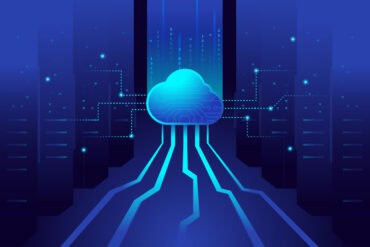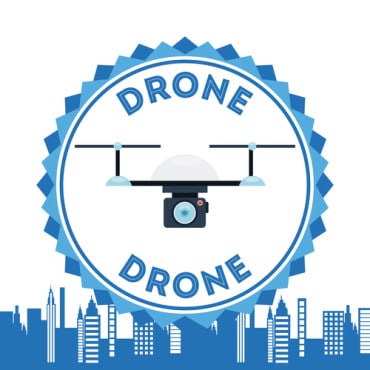
Cybersecurity must become as flexible as the architecture itself to help companies pivot quickly and respond even faster. Continuous intelligence can help.
Cloud computing offers enterprises the flexibility and proficiency to not only gather vast amounts of data but put it in motion for real-time insights. The downside to moving to the cloud is that new cybersecurity challenges arise. These are some of the most pervasive cloud computing threats for the coming years and what some enterprises are doing now to mitigate the risk.
![[Download Now] State of the Cloud: A Security Perspective](https://no-cache.hubspot.com/cta/default/8019034/5e0586ff-f82a-42d8-829e-799c686db2d6.png)
The cloud offers an attractive place for threat actors to focus their efforts. Enterprises are layered with systems, creating loopholes that allow cybersecurity threats to work their way into systems far from where the original source of weakness was located. Add in the millions, even billions of data assets IT teams manage, and you have a massive potential to overwhelm during monitoring alone.
According to a report from Checkpoint Security, cyberattacks were on the rise last year. This is also worrying because we often see an increase in certain types of attacks as they prove lucrative, but it’s rarer to see a general increase. Better automation and tools that allow companies to run their businesses have also created better tools for cyberattacks. Companies will have to approach their security strategies with the same thoughtful automation.
Cloud services are also a primary target because of pandemic-related activities. The pandemic caused an acceleration in cloud adoption as companies tried to adjust to lockdown and other changes in how we work.
Now it’s been two years. Companies and their third-party service providers have had the opportunity to close many of those early security loopholes caused by rapid movement and have largely been successful. However, vulnerability still exists within cloud infrastructure, providing opportunities despite greater security measures.
See also: Why Continuous Intelligence is Essential for Modern Security Operations
Mobile devices and access points are another security risk as remote work continues
Remote work caused an uptick in employees working from their personal devices—convenient for the enterprise during a pandemic and convenient for threat actors. Although it facilitates productivity from a work-from-home space, it decreases visibility for IT teams stretched to the limits.
![[Download Now] State of the Cloud: A Security Perspective](https://no-cache.hubspot.com/cta/default/8019034/5e0586ff-f82a-42d8-829e-799c686db2d6.png)
Different phishing scams, including “smishing” or malicious links sent through SMS, can be difficult to track or spot until it’s too late to alleviate the damage. Personal devices may offer far less security than company devices or those hardwired to a network, so companies must adapt their approaches to employees accessing the company cloud from home.
Mobile devices create insecure access points across the network. Application programming interfaces allow users to access cloud-based products no matter where they are, but they can be ports of entry for malicious actors. Even with authentication, some hackers can exploit these vulnerabilities due to a lack of visibility or phishing.
See also: What Makes Cloud Observability Critical and Different?
Lack of talent will still cause challenges
Companies will continue to fight for crucial IT talent to implement security measures for increasing cloud attack surfaces. However, they won’t be able to solve all their problems through hiring. Instead, they’ll need to take other innovative measures and adopt the tools and processes to increase visibility and automate responses.
Automation helps support IT teams by identifying and then prioritizing flags for monitoring. Human teams can step in to verify if potential attacks are occurring and plug holes. In addition, machine automation can help outline complex relationships between devices, entitlements, and the network.
Key trends we’ll see in cybersecurity for 2022 and beyond
Gartner identified cybersecurity mesh as a key security feature in its list of top strategic tech trends for 2022. Cybersecurity mesh mimics the move towards flexible, composable architecture by allowing companies to reconfigure their cybersecurity protocols to match needs in real-time. It helps companies integrate distributed security services. The mesh would allow IT professionals and administration to verify identities, provide context, and ensure policy adherence across the entire system.
Experts identify cybersecurity mesh as a process that allows companies to integrate cloud services into their zero trust architecture as a whole. End-point detection and response, as well as multi-factor authentication, also fit into the security process here.
Cloud-native platforms and tools also have a place in the overall security strategy. These products and tools make security easier because they make the most of what the cloud offers and then protect those assets the way cloud products need. Most importantly, it helps enterprises maintain visibility where they need it.
Reducing the cloud attack surface is also required. Quick response times will also reduce the amount of damage hackers are able to do. Either way, cloud attacks will become more commonplace, and companies should be ready.
See Also: Continuous Intelligence Insights
Greater cybersecurity maturity will make a difference
Companies still in the early stages of their cloud migration will be more vulnerable than those with a more mature cloud strategy. Those companies understand their attack surface and cloud landscape, giving them a better opportunity to handle the basics.
And that’s what many of these security attacks are. While truly complex threats exist, many of the most pervasive phishing and ransomware are still simple. That means that less mature companies aren’t doing the foundational work of creating a secure cloud architecture and training their people to be on the lookout for anomalies. IT can’t handle everything. Mature companies know this and work with employees to ensure that private devices are handled with proper security protocols and zero trust remains in place.
Organizations can’t turn back the clock on remote work or cloud migration, but they can implement basic security protocols that help protect cloud assets. With processes such as cybersecurity mesh, companies can adapt their security infrastructure to help meet the basic requirements that cybersecurity requires today.
That’s the biggest trend moving forward—adaptability. Cybersecurity must become as flexible as the architecture itself to help companies pivot quickly and respond even faster. This is the only way companies will be able to implement an integrated, cohesive, and, most importantly, automated security infrastructure.
![[Download Now] State of the Cloud: A Security Perspective](https://no-cache.hubspot.com/cta/default/8019034/5e0586ff-f82a-42d8-829e-799c686db2d6.png)






